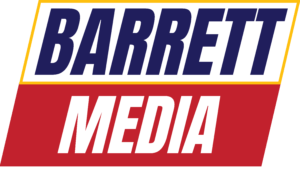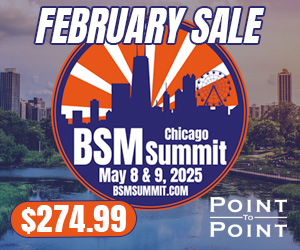For years, newspapers posted their stories on the Internet, believing that making their print product available in a digital format was innovative.
And it was to a certain extent. It took one piece of content — a story or column — and turned it into two products. One was published in newsprint, essentially the packaging used to deliver the advertising that provided the newspaper’s real revenue. The other story was posted online, which is where everyone knew that daily journalism would be consumed at some point in the future once all the readers who preferred newspapers literally died off.
Sorry, that was a bit grim.
This was an understandable decision: The newspaper was the core business, and while everyone knew the Internet was the future, the print product was providing almost all the revenue. So newspapers trudged on, hoping that they’d have a functioning business model for the Internet by the time they really needed it all the while continuing to churn out content for the legacy business they knew had an expiration date.
Sound familiar? It should. Substitute “terrestrial radio” for newspaper, and “podcast” for Internet.
We all know where the industry is headed, right? It would require willful ignorance not to at this point.
“Sports podcast downloads doubled year-over-year” read the story last from Jordan Bondurant right here at BarrettSportsMedia.com. “Here’s why talk radio needs to embrace podcasting” implored the headline at InsideRadio.com earlier this month. That story cited a study showing that of the spoken-word content consumed by individuals ages 13 to 24, 35 percent came via podcast and 16 percent over AM/FM radio.
The question isn’t whether podcasts are going to become the dominant medium, but when. The problem that the talk radio industry is currently grappling with is what to do in the meantime while terrestrial radio is still paying the freight. I’m sorry to tell you this, but the fight’s only going to get tougher.
I speak from experience here. I worked as a newspaper reporter in Seattle from 1999 to 2013, and as a history major, I’m resisting a very deep urge to quote Winston Churchill about how those who don’t learn from history are doomed to repeat it.
Crap. Too late.
Now, these are different businesses, radio and newspapers, but there are some similarities, too. Over the next few weeks, I’m going to offer a series of observations that I believe will help both programmers and hosts avoid some of the detours and mistakes that newspapers made over the past 20 years. I’ll start today with a very simple fact: Podcasts and radio shows are two very different products.
Now, if I may, an equally simple suggestion: Don’t do what newspapers did. More specifically, don’t continue to emphasize your legacy product (terrestrial radio) to the point that you fail to understand and engineer the new product (podcasts).
You might think you’re already developing your podcasts. However, just because you can post your three-hour radio show on a website for listeners to download does not make it a podcast. These are different products, and while they may sound similar and contain similar content, they function very differently for the listener for one very simple reason: All podcast listeners start at the same point and move in a straight line through your program. On a radio show: You have people joining and exiting all the time. It’s like a freeway. In contrast, a podcast is more like a tunnel where teases and summaries are wasted time, breaking news is an oxymoron. You start at the beginning and continue until you decide to stop.
Currently, radio stations bridge this gap by posting the radio show as a podcast, which provides a certain amount of efficiency. You get two products to sell from one show. Sound familiar? It’s how newspapers saw their articles when they started posting them online. And it works. To a certain extent.
But what the experience of newspapers should teach us is that this is a Band-aid, though, not a viable long-term arrangement.
The most important pieces of content in a printed newspaper — the columns, the more thoughtful, nuanced and longer stories — are not the most important pieces of content for an online news publication. The most important type of content for an online news publication — thorough, almost obsessive content, frequent updates — are not the most important pieces of content for the daily newspaper.
You end up with two businesses, in effect, one whose audience is effectively shrinking, the other whose audience is growing, and in the case of newspapers, many of the resources remained aimed at the audience that was declining. It should be fairly obvious why this does not make a ton of sense.
The moral of this story is not to slash-and-burn the legacy product be it newspapers or terrestrial radio. These are not just profitable businesses, they are the backbone of the current revenue stream. They should not be abandoned or undercut until you KNOW the financial model you’re moving, too.
What I am saying is that you should recognize the way your product is going to change though and start to not just adapt but increasingly incorporate it into your daily business. We post radio shows as podcasts even as we know the limitations, but why can’t you conceive and build a podcast that you then modify so it can also air as a show on terrestrial radio?
It will take some tweaks. You’ll need the teases and summaries that are necessary to keep listeners or catch them up. You’ll need news updates to keep it current. You’ll need to break up a 45-minute deep dive into one subject into four, maybe even five segments.
There are downsides to this. You’re building a product whose primary use is oriented toward the future instead of the present. The upside is that you’re adjusting your business to the format we all know is coming, and in the meantime, maximizing the return by incorporating it into the legacy product.
But more than anything, podcasts are where the growth in this industry will be. It would be stupid not to start developing content that is designed to work in that format.
Danny O’Neil is a sports media columnist for BSM. He has previously hosted morning and afternoon drive for 710 ESPN Seattle, and served as a reporter for the Seattle Times. He can be reached on Twitter @DannyOneil or by email at Danny@DannyOneil.com.









